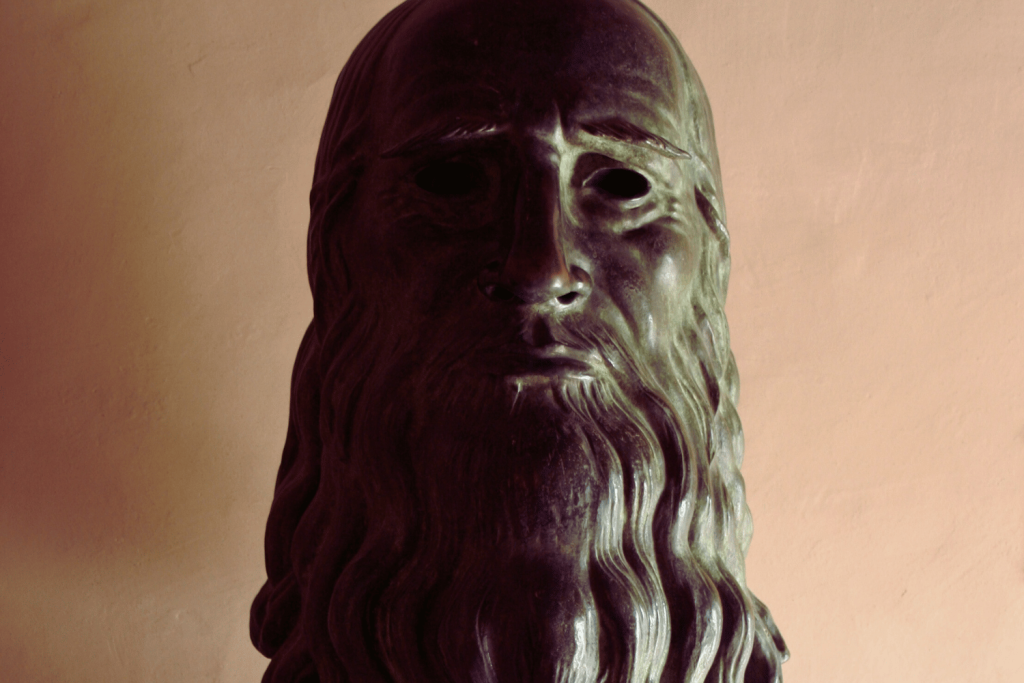Leonardo da Vinci
Vinci 1452 – Amboise (Francia) 1519

Leonardo's life
According to tradition, Leonardo was born in the house in Anchiano, in the countryside around Vinci, the illegitimate son of the notary Ser Piero di Antonio da Vinci and a woman named Caterina. He spent his childhood and adolescence in his hometown.
Leonardo moves to Florence with his father and attends the workshop of Andrea del Verrocchio.
He is registered with the Compagnia di San Luca, the painters’ confraternity in Florence. He creates his first paintings, including the Annunciation.
On August 5, the feast day of Santa Maria della Neve (Saint Mary of the Snow), the drawing known as Landscape of the Arno Valley is dated — a view of Montevettolini, Monsummano, and the Fucecchio Marshes.
Leonardo is in Vinci among those present at the signing of a contract for the lease of the Municipal Mill to his uncle Francesco.
The monks of San Donato at Scopeto commission Leonardo the Adoration of the Magi, which was never completed. At the same time, he is working on Saint Jerome, also unfinished.
Leonardo moves to Milan to the court of Ludovico il Moro, where he works as an engineer, set designer, painter, and sculptor. During these years, he creates the portraits now known as the Musician, the Lady with an Ermine, and the Belle Ferronnière.
The monks of the Confraternity of the Conception commission Leonardo and the De’ Predis brothers to create a panel for the church of San Francesco Grande in Milan. This is the Virgin of the Rocks, of which two different versions are known.
He studies with the Sienese artist and engineer Francesco di Giorgio and the mathematician Luca Pacioli, who is originally from Sansepolcro.
Leonardo leaves Milan, which has been invaded by French troops.
He spends brief periods in Mantua, where he creates the preparatory drawing for the portrait of Isabella d’Este, and later in Venice.
Leonardo works as an architect and engineer in the service of Cesare Borgia in Romagna.
He works on a Saint Anne and begins painting the portrait of Monna Lisa (the Mona Lisa). On July 9, his father, Ser Piero da Vinci, dies.
Leonardo is back in Milan, in the service of the governor Charles d’Amboise, for whom he designs a grand residence.
In September, he leaves Milan with his pupils and moves to Rome under the patronage of Giuliano de’ Medici, brother of the new Pope Leo X.
He accepts the invitation of the King of France, Francis I, and leaves Rome to move to Amboise.
Leonardo stays at the Château du Clos Lucé and holds the position of “première peintre, architecte et maccanicien du roi.”
On April 23, Leonardo drafts his will, appointing his pupil Francesco Melzi as executor, to whom he also leaves all his drawings, manuscripts, and “works of the painter.” On May 2, Leonardo dies at his residence in Clos Lucé.